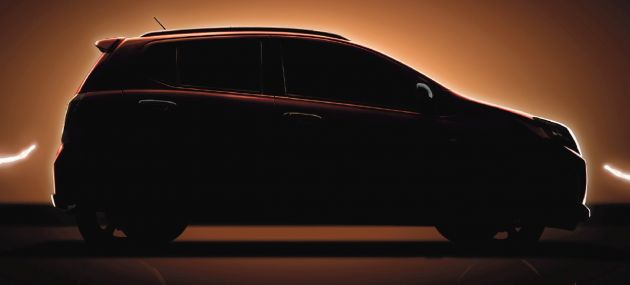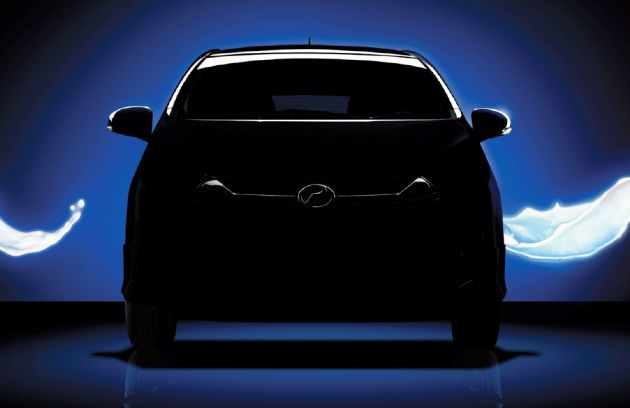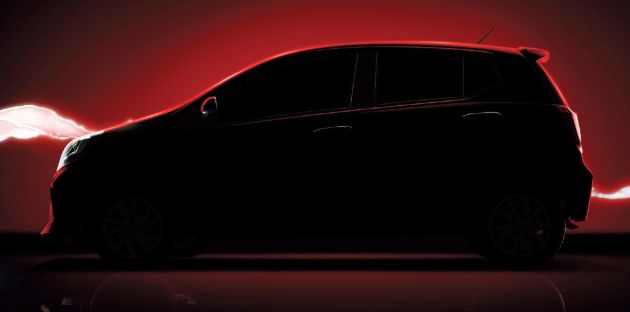The Perodua Axia, which has been around in current facelifted form since early 2017, has been given another update, and the 2019 Perodua Axia is now open for booking. There’s plenty to talk about – from new segment-first equipment, to new variants and an SUV-inspired offshoot, plus revised pricing, so let’s start.
The Viva-replacing Axia has been with us since September 2014, and it received a midlife facelift in January 2017. For all its life, the Axia has had two unique faces – a normal one and a sportier one for the SE and Advance. This split is no more – now, all Axia variants share the same face, with trim differences.
The outgoing Axia range had four trim levels (E, G, SE, Advance) and two of those (G and SE) had manual or auto options (base E was MT only, top Advance was AT only). In the 2019 Axia range, Perodua has added two new variants, and deleted the manual option for the SE, which means that other than the “driving school spec” E, all Axias come with a four-speed automatic. The new range reads E, G, GXtra (new), Style (new) SE and Advance.
There’s demand for a manual E, which is still the cheapest new car on sale in Malaysia, but little appetite for a stick shift higher up the the range, Perodua says. Like before, the 5MT and 4AT are paired with a 1.0 litre three-cylinder engine. The 1KR-VE VVT-i engine makes 67 hp and 91 Nm of torque at 4,400 rpm. Claimed FC is unchanged – 22.5 km/l for the MT and 21.6 km/l for the AT. But why is the new Style variant rated lower at 20.8 km/l? More on that later.
We move on to equipment. Like before, all variants above the E come with ABS and EBD, but Vehicle Stability Control (VSC) makes its debut in the 2019 Axia. The active safety system, and P2’s anti-theft bag hook are available from the GXtra up. That’s very welcome, but the big news here is the introduction of the Advanced Safety Assist (ASA) 2.0 safety pack on the range topping Axia Advance.
First seen on the Myvi and then the Aruz, P2’s ASA safety suite includes Pre-Collision Warning (PCW), Pre-Collision Braking (PCB), Front Departure Alert (FDA) and Pedal Misoperation Control (PMC), all working with the assistance of a stereo camera located at the top of the windscreen.
ASA 2.0 was first seen on the Aruz SUV, and while there are no new functions over the original ASA (Myvi) there are improvements in working range and parameters. The operational speed of PCW is now from from 4 km/h to 100 km/h (was 4 km/h to 30 km/h), and it detects pedestrians as well (from 4 km/h to 50 km/h, ASA was only for vehicles).
Should the driver not respond to the PCW’s audio visual warning by braking or steering away, PCB takes over by automatically braking the car. Known in general as autonomous emergency braking (AEB), the system provides two-stage braking intervention, first applying weak primary braking and then hard braking as a collision is imminent.
PCB operates from 4 km/h to 80 km/h for vehicles and from 4 km/h to 50 km/h for pedestrians. Perodua says that at speeds of up to 30 km/h (10 km/h higher than the Myvi), PCB will help prevent a crash. At medium speeds (30 to 80 km/h for vehicles, 30 to 50 km/h for pedestrians), the system would have trimmed enough speed to help lessen the impact.
FDA and PMC are as per the Myvi. FDA informs you when the car in front has departed in a traffic jam or queue by buzzing an alert. PMC provides an override of engine output in cases where the system detects an object in front of the vehicle, within a four metre distance. It helps prevent the accidental stepping of the wrong pedal (gas instead of brakes) in parking situations.
The model’s airbag count remains at two, and the Axia’s four-star ASEAN NCAP rating is maintained, but the addition of VSC and ASA 2.0 is a big deal in this segment.
Away from safety kit, the G spec gets two speakers and 14-inch alloys. For many, the GXtra is where it really starts – besides the above-mentioned VSC and anti-snatch bag hook, it adds on front and rear parking sensors, driver’s seat height adjustment, electric side mirrors with auto retract, and two rear speakers (for four in total).
As mentioned, going for the SE will no longer get you a unique face, but it’s still the “sporty” variant in the range thanks to chrome trim on the front grille, plus skirting on the front bumper and sides with red accents. Other SE-onwards equipment include safety and solar window tint, and keyless entry with push start. Like before, the top Advance is based on the SE, but it adds on ASA 2.0 and a touchscreen head unit with reverse camera.
Lastly, the bigger surprise than VSC/ASA. It’s not often that one catches Perodua experimenting, but here’s an all-new variant that hasn’t been done before on any of its model lines. The Axia Style gets SUV-inspired looks, which brings to mind the Volkswagen CrossPolo, Hyundai i20 Active and Honda WR-V. All three examples are basically regular B-segment hatchbacks dressed up as SUVs, and they have no more off-road ability than the stock Polo, i20 and Jazz. The Axia Style is like that.
We’ve seen the Axia Style at a private preview earlier this month, but because no photography was allowed, I’ll try my best to describe the new variant. Like those global B-segment examples, the Style wears SUV-style black plastic cladding around the lower body, with silver painted sections at the lower front and rear bumpers that mimic skid plates. Adding to the desired effect are black roof rails, although they’re merely decorative.

The Style’s front end is slightly different from the rest of the range, thanks to black carbon-textured stickers around the “mouth”, giving it a face that reminds us of the blue-coloured previous-gen Myvi SE. There’s also a unique dotted grille insert and an exclusive Style colour – orange.
The Style also stands taller than other Axias, by 15 cm to be exact. This added height is not because of raised suspension, but only from the 15-inch alloys (an inch up) and thicker tyres combo, plus the roof rails. The result of this is slightly compromised fuel economy: 20.8 km/l vs the standard car’s 21.6 km/l.
Inside, the Axia Style is unchanged save for unique “denim” fabric for the seats, which have a “fish scales” pattern and contrast stitching. The Style is actually not the range topper, and aside from its unique “SUV bits”, equipment count is largely similar to the GXtra, with the addition of keyless entry and push start. Perodua is expecting 20% to 25% of total Axia sales – which are skewed towards women (in contrast, most Bezza buyers are men) – to come from the Style.
Lastly, pricing – the company has revealed the estimated on-the-road prices (without insurance) for the 2019 Perodua Axia ahead of the its arrival in showrooms. Here’s the estimated pricing for the six variants in the Axia range:
- Axia Standard E – RM24,090
- Axia Standard G – RM33,490
- Axia GXtra – RM34,990
- Axia Style – RM38,890
- Axia SE – RM38,890
- Axia AV – RM43,190
Research Perodua Cars at
Related Cars for Sale on
Source: Read Full Article



















